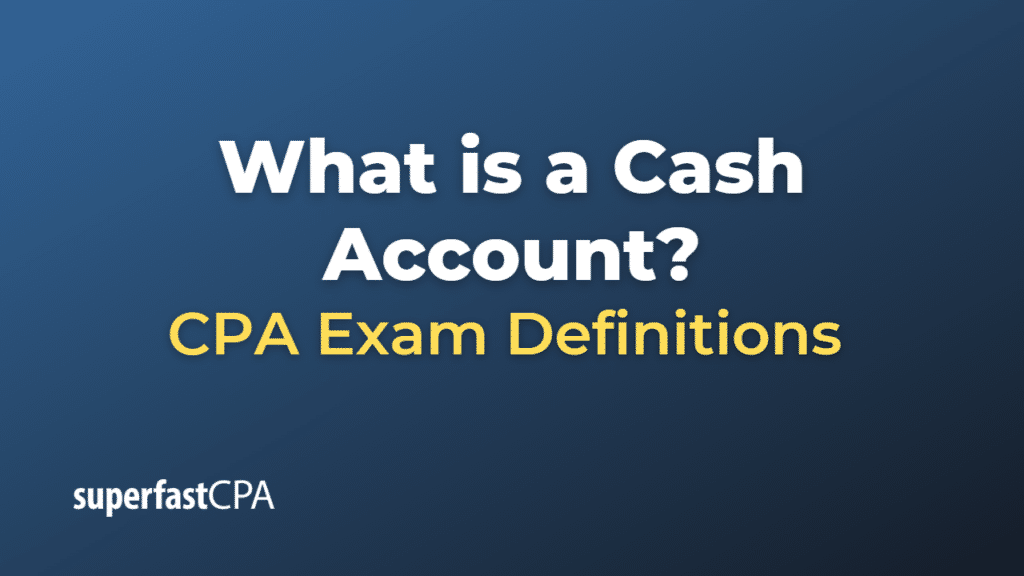Cash Account
A cash account, in the context of investing and brokerage accounts, is a type of account where an investor must deposit the full amount of money required to purchase securities before executing a trade. Unlike a margin account, where an investor can borrow money from a brokerage firm to purchase securities, a cash account does not allow borrowing or trading on margin.
In the context of accounting, a cash account refers to a general ledger account that tracks the cash transactions of a business. This account records the inflows and outflows of cash, which are essential for understanding a company’s liquidity, solvency, and overall financial health.
In both contexts, the cash account is an essential component of financial management. Here are the key features of each type of cash account:
- Cash Account in Investing and Brokerage:
- Investors are required to deposit the full amount of money to purchase securities.
- No margin trading or borrowing is allowed.
- Lower risk profile compared to margin accounts, as there is no debt exposure or risk of margin calls.
- Suitable for conservative investors or those who want to avoid the risks associated with margin trading.
- Cash Account in Accounting:
- A general ledger account that tracks cash inflows and outflows for a business.
- Helps in monitoring the company’s liquidity and cash flow.
- Used to prepare financial statements, such as the balance sheet and the cash flow statement.
- Essential for effective financial management, budgeting, and decision-making.
In both cases, the cash account is crucial for maintaining financial stability and managing financial transactions effectively.
Example of a Cash Account
I’ll provide an example for each context:
- Cash Account in Investing and Brokerage:
Jane wants to start investing in stocks and opens a cash account with a brokerage firm. She decides to buy 50 shares of a company, with each share priced at $20. To execute this trade in her cash account, Jane needs to deposit the full amount required to purchase the shares, which is:
Total Cost = Number of Shares × Price per Share
Total Cost = 50 shares × $20
Total Cost = $1,000
Jane deposits $1,000 in her cash account and proceeds to purchase the 50 shares. In this cash account, Jane cannot borrow money from the brokerage to buy additional securities or trade on margin. This limits her risk exposure and prevents her from facing margin calls if the value of her investments declines.
- Cash Account in Accounting:
Let’s consider a small business, “FlowerShop Boutique,” which maintains a cash account in its general ledger to track cash transactions. During a month, FlowerShop Boutique records the following cash transactions:
- Cash sales revenue: $10,000
- Loan received from the bank: $5,000
- Payments to suppliers: $6,000
- Salaries paid to employees: $3,000
- Rent paid for the store: $1,500
At the beginning of the month, FlowerShop Boutique had a cash balance of $2,000. To calculate the ending cash balance, the business would account for all the cash inflows and outflows during the month:
Ending Cash Balance = Beginning Cash Balance + Cash Inflows – Cash Outflows
Ending Cash Balance = $2,000 + ($10,000 + $5,000) – ($6,000 + $3,000 + $1,500)
Ending Cash Balance = $2,000 + $15,000 – $10,500
Ending Cash Balance = $6,500
At the end of the month, FlowerShop Boutique’s cash account balance is $6,500. This information helps the business assess its liquidity, manage its working capital, and make informed financial decisions.













